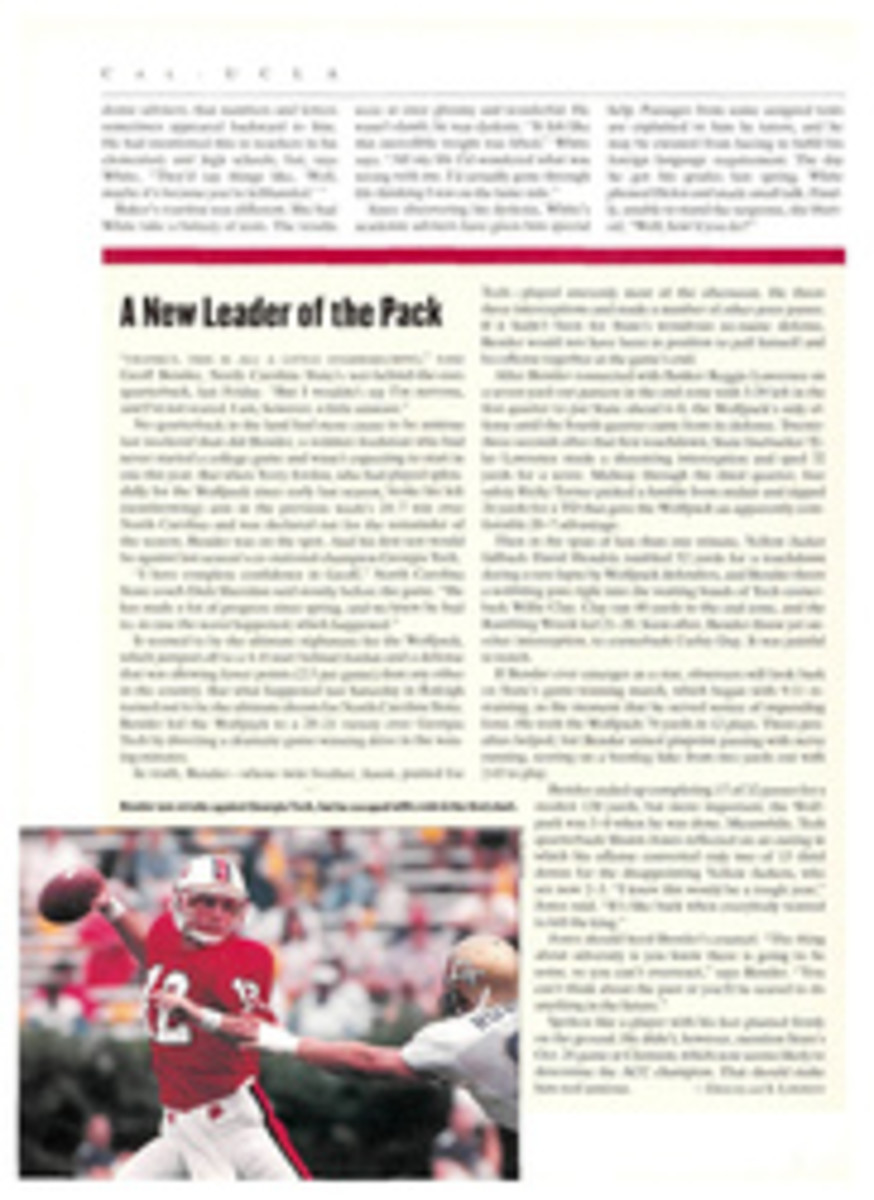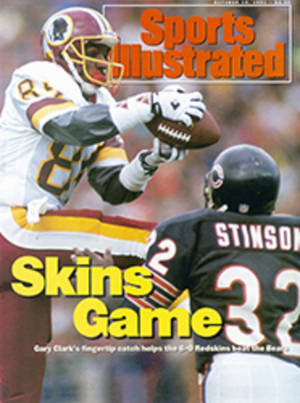
Syracuse's Bassackward Center
If I turn my center around, have him face the backs, then that will give me another blocker, almost like having a fifth man in the backfield." Such was the thinking of Ossie Solem, the football coach at Syracuse, in 1941. He figured he would give it a try.
Solem had coached Iowa for five seasons, and when Syracuse hired him in 1937 the hope was that he would teach the Orangemen to play rough-and-tumble Big Ten-style football. But by 1941, Solem had more dramatic things in mind. Having conceived of a reversed-center offense, he and his three assistants—including Bud Wilkinson, then a line coach and seven years away from beginning his storied career at Oklahoma—studied the rulebook to sec if it was legal. They concluded that a formation with the center facing his backfield was within the rules.
During preseason practice, behind locked gates, Solem worked up some plays using the reversed center, and tried a number of players at the position. He decided upon Ken Beehner, now a retired sales manager living in Boynton Beach, Fla. Beehner had long arms—and thus could reach back through his legs to hike the ball—and was fast enough to run with whichever of the four backs got the ball from him.
In a closed scrimmage at West Point, Solem put his formation to the test, and a highly regarded Army team could not contain the Orange offense. Solem saw that the ball could be flipped to any of the backs with great ease and, more important, that the center could lead the blocking. A fifth man was now available to run, pass or lateral the ball. "It gave us deception," says Beehner. "We tossed that ball around like it was a basketball."
Solem didn't use the new formation during the Orangemen's opening game, an easy 39-0 win over Clarkson. He reserved it for Cornell, a national power at the time and Syracuse's second opponent. On their first offensive play against the Big Red, the Orangemen ran from the reversed-center formation, and nearly picked up a first down. There was a great roar from the crowd in Ithaca and a chorus of whistles from the officials. Following a lengthy huddle of coaches and officials, punctuated by much arm-waving and many raised voices, the referee agreed that the formation was legal.
Later in the first quarter, Syracuse ran a particularly tricky reversed-center play, which Solem called a "buck lateral." Beehner hiked the ball to the fullback, got the ball back on a handoff and then lateraled to a halfback. "It was a long gain that got us close to the goal line," remembers Beehner. "But it was called back." Syracuse only threatened once after that, and Cornell won the game 6-0.
The Orangemen became more adept at running the reversed-center attack. Against powerful Wisconsin, which had fullback Pat Harder in its own backfield, Syracuse used the formation on almost every play to pull off a stunning 27-20 upset. Says Red McPhail, the right end for the '41 Orangemen, "After the win at Wisconsin, the newspapers started bowl speculation. They practically had us in the Sugar Bowl, until we lost [34-19] at Penn State, and then Colgate tied us [19-19]."
Syracuse finished 5-2-1, but ranked fifth nationally in rushing, Football people wondered what other coaches would incorporate the formation into their offenses. But in the off-season the NCAA rules committee did what most of Syracuse's opponents couldn't: It stopped Solem's reversed-center offense. The committee instituted a rule requiring that everyone on the line of scrimmage face the defensive team when the ball is snapped. Simple as that. A formation that scored points and excited the crowd was done in by committee.
During the committee meeting, which was held less than a month after Pearl Harbor, re-versed-center critics referred to the formation as "the about-face offense." Said Amos Alonzo Stagg, "Football has always been a combative game, and combatants should always face each other."
Solem, who coached three more seasons at Syracuse and 12 at Springfield (Mass.) College, died in 1970, never having made a public display of his disappointment. Perhaps he had seen the handwriting on the wall when Beehner played in the East-West Shrine Game following the '41 season. In that all-star game Beehner was told to play center the old-fashioned way—head first.
ILLUSTRATION
RUSS WILLMS
Matt Byrne, Syracuse class of '43, is a lawyer. This is his first piece for SI.

